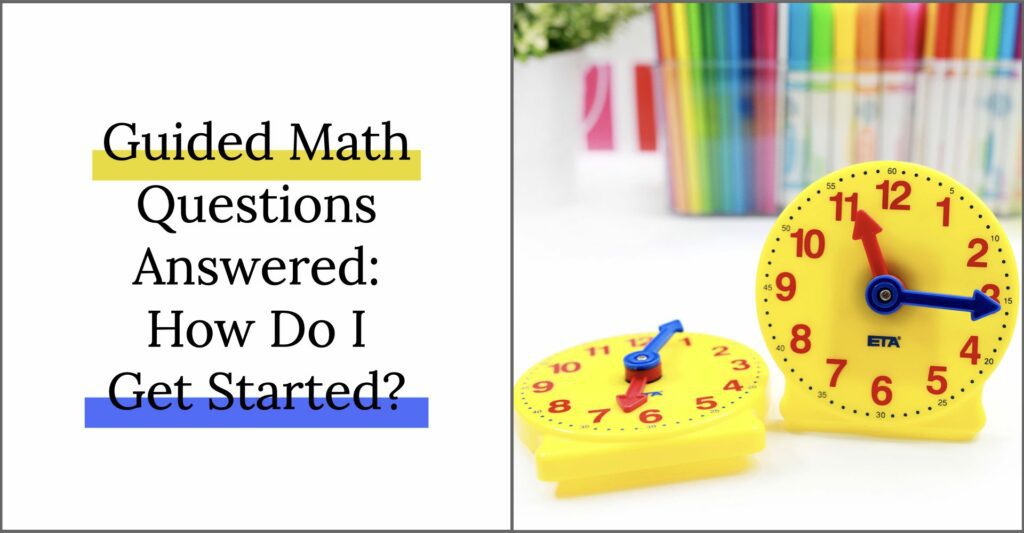
You’ve decided to take the plunge into Guided Math – congratulations! But…now what? Tips for how to launch a guided math model is one of my most requested topics. And, friends, I get it. When I first started guided math in my classroom, I was so overwhelmed by the idea of managing small groups and rotational math centers simultaneously.
But stick with me on this and trust that your prep, student engagement, and depth of learning will improve in ways you’ve never imagined! And, after years of using the guided math model across three different grade levels, I can confidently say: how you launch your guided math routine matters.
To prepare for this post, I thought deeply about how I set up my guided math block for success. What I discovered was that there are three big tips I always come back to for launching guided math. Ready for centers that run smoothly and a math block that is easier to manage than ever before? Let’s get to it!
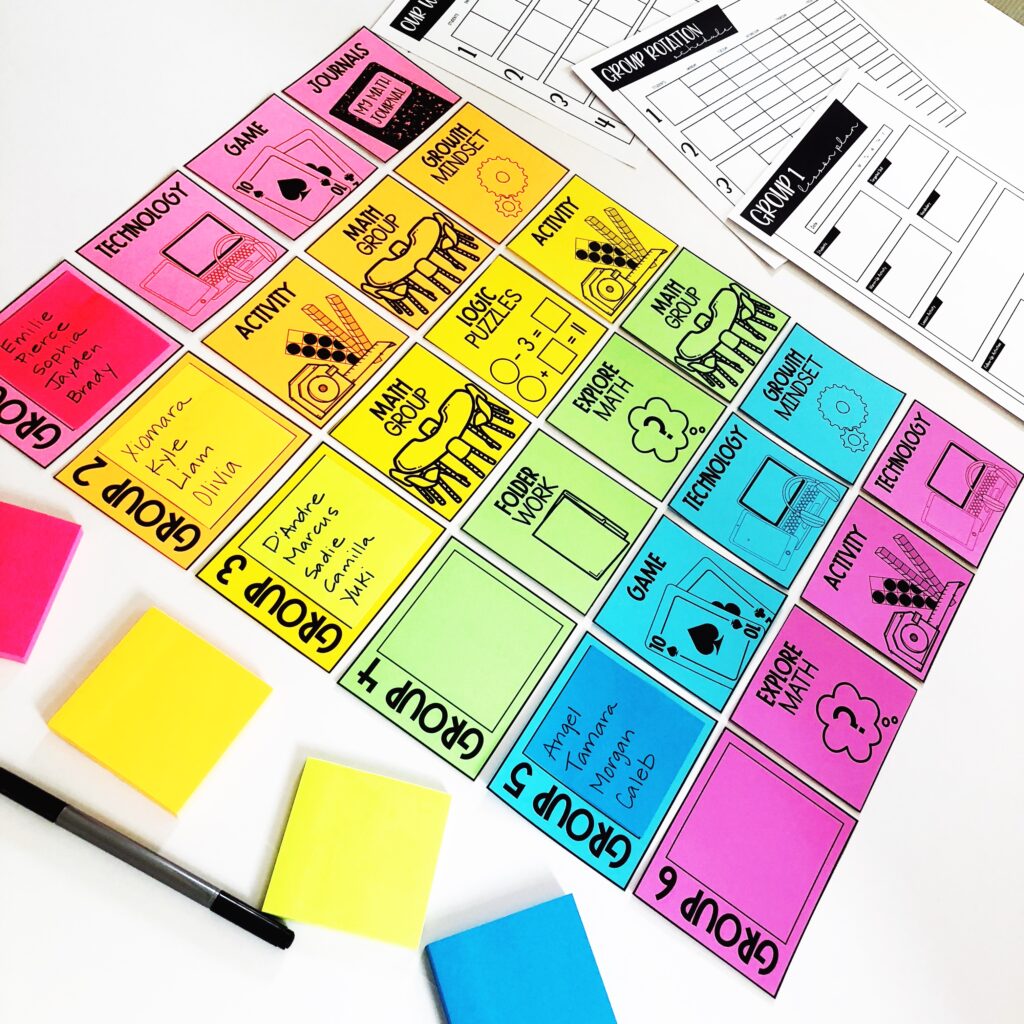
Be Proactive
It can be tempting to move quickly when starting an exciting, new routine in our classrooms. I made this mistake when I first attempted to launch guided math. As teachers, we are under pressure to cover a large amount of math material in a short amount of time so, we (including myself) can fall into the trap of skipping ahead.
My first big piece of advice to launch guided math in your classroom: Go slow, to go fast. When looking at your pacing calendar for the year, this can feel like a big change, however, if you start by taking the time to focus on routines and settle into the classroom flow, you will actually cover MORE material in the long run.
Taking time to empower students will actually decrease many of the curriculum-stalling behaviors and increase productivity. One example: if students know where to find their materials and where to look when they feel stuck, you will spend less time fielding questions from students as they settle into center work. When they can manage these pieces independently, you’ll have more time to work with small groups with limited interruptions.
I start with an anchor chart of guided math expectations. In a whole group, the students and I discuss expectations for our guided math block. I emphasize that we will be learning a lot together this year. That includes learning how to work independently, as partners, and in groups. It’s important that students understand the choices they make during math can either support their peers’ learning or detract from it. By emphasizing how each member of our classroom community plays a role in the success of our math block, we encourage students to take ownership of their learning, thus increasing motivation.
To accomplish this, students need to know what it looks like and sounds like to be an independent math learner. Discussing expectations provides the class with a common reference point. Guidelines and agreements make their way onto the anchor chart as they are suggested by students. Some suggestions will stay on the chart, while others might be reasoned off with a little reflection.
These are some of the typical agreements students suggest from year to year:

Word for the wise: Like clockwork, one student always offers the agreement, “No talking”. Silence has its benefits but, learning often involves (and requires) conversation, so I make sure to emphasize that partners and teammates should keep conversations about math only. And that real mathematicians problem-solve together when the activity calls for it.
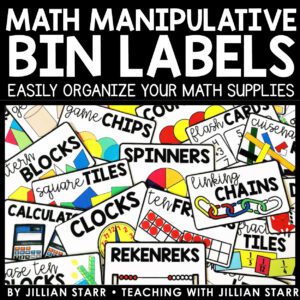
Math Manipulative Bin Labels
Model, Model, Model (Or, Practice, Practice, Practice)
“Practice makes all the difference.”
That is my motto for all routines in my classroom. Providing students ample time to see and to practice expectations is crucial.
For me, this goes beyond modeling new activities. It includes what it is like to be at a center, what it is like to do the work of each activity (math journal, partner work, game, etc.), the process of organizing and finding materials (including clean up), and the feeling of focusing on the task at hand. To successfully launch guided math, taking the time to carefully practice these routines is a must.
There is a difference between demonstration and modeling. A demonstration is showing and telling instructions. Modeling requires both showing or describing how to do something and an immediate opportunity for students to try with support. You must model everything, scaffold everything, and practice everything multiple times before you can expect students to do it independently.
I start modeling (demonstration + practice) right away. The modeling begins before the anchor chart of expectations is complete. As we learn more about the routines and flow of a guided math session, we add more (or take away) to the anchor chart. [I’ll talk about the importance of reflection after practice below!]
Use Review Content for Modeling
When launching guided math in my classroom, I start with math content you know most students are already comfortable with. Model activities and your daily guided math flow with review content that you’re reasonably confident most students can do with ease. I never introduce new content along with a new routine. Intellectual confusion or frustration will slow the process of learning a habit or practice.
I also follow a predictable sequence to teach new routines (modeling + predicability = independence!):
- Teacher Demonstration
- Student volunteer
- Whole Class practice
- Reflection
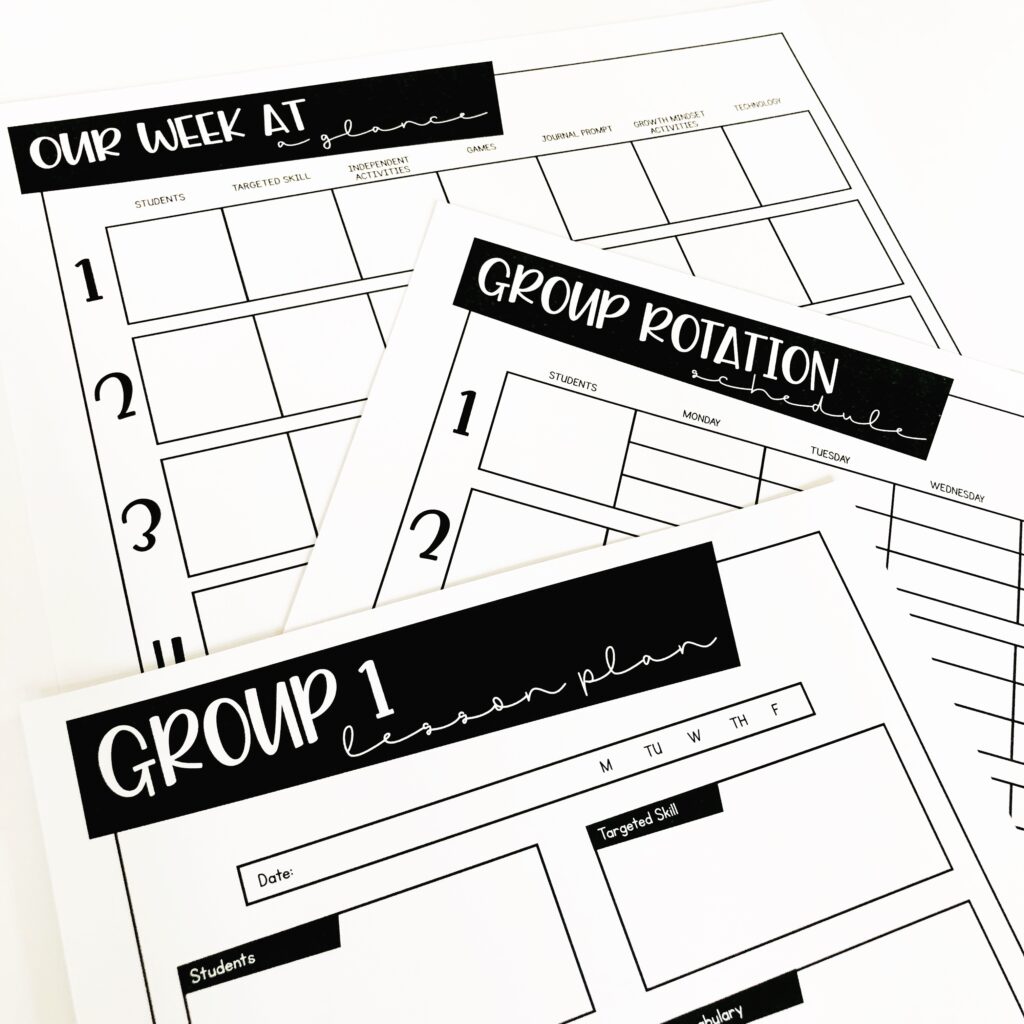
Start with a teacher demonstration with the whole class
I model everything as an entire group to start. While small groups are a staple of guided math (think: 3-5 kids per grouping), I keep things simple in the beginning. I start with the whole group. Introduce each new type of center/station one day at a time. As a class, we try to do activities and routines together.
Have Students Model
After I do a quick demonstration, I ask for volunteers to replicate what I did. I ask that they slowly and deliberately model the instruction. The rest of the group watches. The idea is that the rest of the students are getting a second chance to see the routine. They are also asked to notice what the volunteer students are doing.
Whole Class Practice
After both the teacher and the student modeling, it is time for everyone to try. Whole class practice is a chance for every student to practice the routine with teacher scaffolding, reminders, and support.
Reflection
Reflection is crucial. The reflection process ingrains the routine as a structure that will be intentional every day. They will notice and be able to follow the system more deliberately and independently in the future. Reflection also gives time for students to ask questions about the structure of guided math. And, it allows you to explain the “why” behind each aspect of the routine.
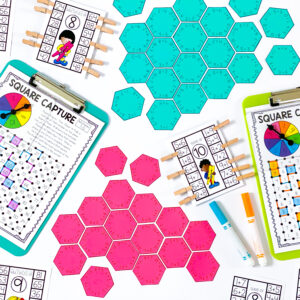
Free Math Centers
Looking for a fun way to help your students master their math facts? These free math centers are so engaging, they won’t even realize they’re learning! (Available for addition and multiplication!)
Baby Steps: Gradually Release Responsibility
The systems of guided math include a lot of independence, so as you get ready to launch guided math in your classroom, it’s important to proceed with patience. That’s why I always emphasize: baby steps. By gradually releasing responsibility we are able to set students up for (independent) success. I use the following steps (from most to least support):
- Whole Group Modeling + Practice
- Whole Group Centers
- Half Group Centers (with rotation)
- Small Groups
- Small Groups for Guided Math with new content introduced
Whole Group Modeling
The whole group modeling is the first baby step. We go through the basic routines without new mathematical content. We model and learn the basic practices of the different math centers they will encounter throughout the year.
Knowledge of where to find, how to use, and how to put back manipulatives empowers my students to become independent. I always make sure to practice using manipulatives from taking them out to putting them away. This is part of learning how to use and take care of our classroom materials. It is also a massive time saver at the end of each rotation!
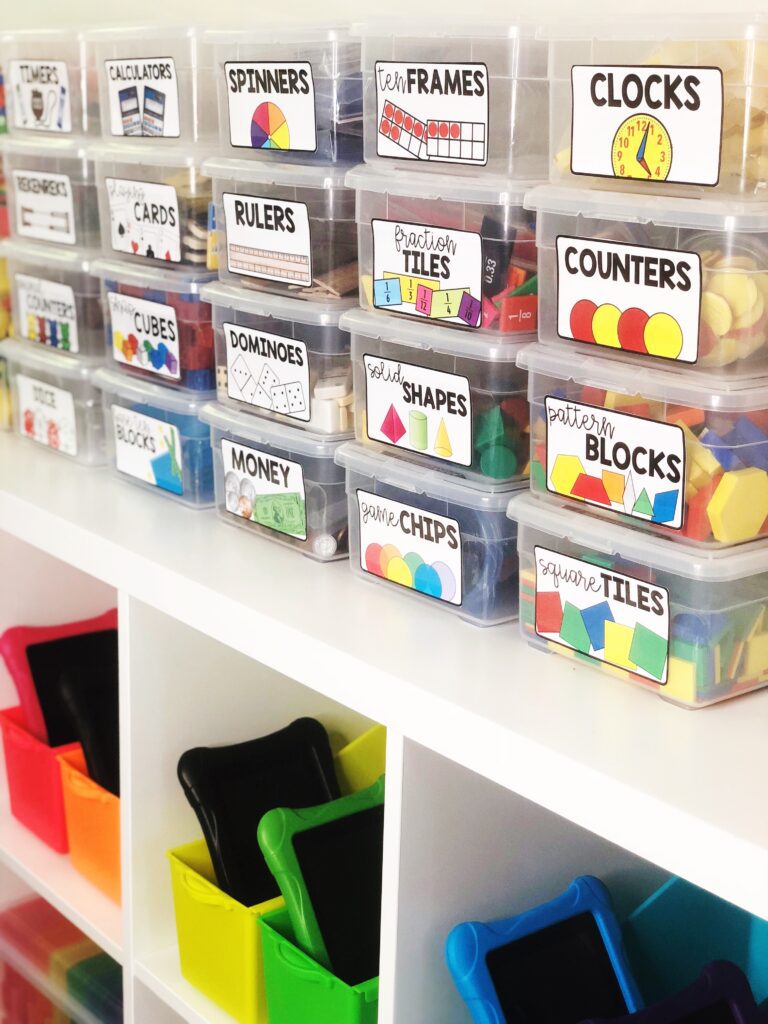

Whole Group Centers
Then, we do it! As a whole class, we engage in centers with the whole group working together, which includes transitioning from one activity to another and using and putting away manipulatives. It’s important to ease into the idea of rotations.
Half Group Centers
Once you have modeled and practiced guided math routines as a whole group, look for signs of independence and then begin to add on. I start by breaking the group into half groups. Two half groups are much more manageable as students get used to the idea that they will be doing one activity while another group will be doing something else.
One way to move this along: get them excited! With each day of practice, I preview the subsequent routines and hype them up. I might say, “You’ll get to go to these two centers today. The other one you will get to go to tomorrow.” That way, students know that there will be a shift into smaller groups, additional centers, and that they might not visit each center today.
Introducing New Content
But Jillian, when do I introduce new content? Short answer: when you notice independence. It might take a couple of weeks to get your guided math routine flowing – and that is OK! You might need to review and repractice parts of your math block structure – also totally OK! It is time for your new math content as soon as you notice that students can follow the routine of guided math without addition reminders and modeling. That is when your students will be ready to focus on new concepts and skills without worrying about the how-tos and where-to-gos.
Now it’s time to launch guided math in your classroom! I hope these tips help you get your math centers up and running with ease. You might even have your own tricks up your sleeve. If you do, please share!

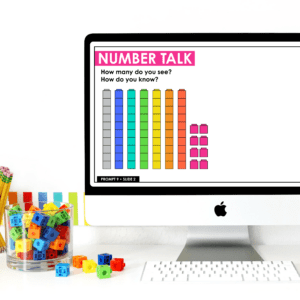
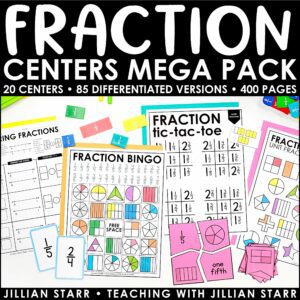
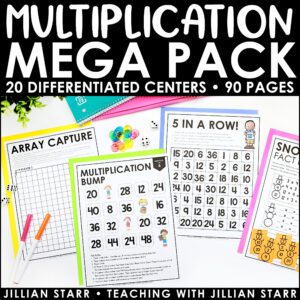
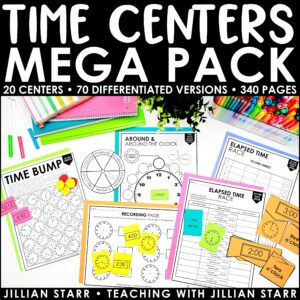
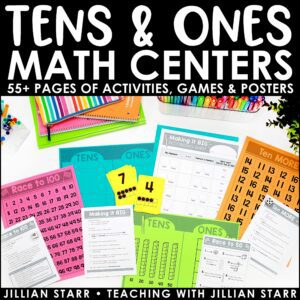

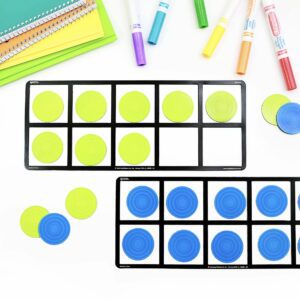
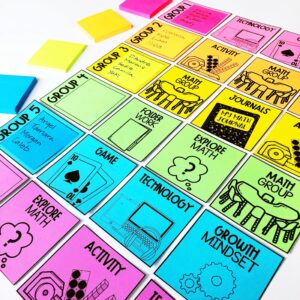


I love the weekly planning sheets you have a picture of in the article, but I can’t seem to find them in your store. Do you sell them?
Hi Liana! I’m sorry for not linking them. They’re part of my Guided Math Start-up Kit on TpT. You can find it here: https://www.teacherspayteachers.com/Product/Guided-Math-Center-Start-Up-Kit-3906165?st=292c52bdcdb1e208936ec91ddb821d8e